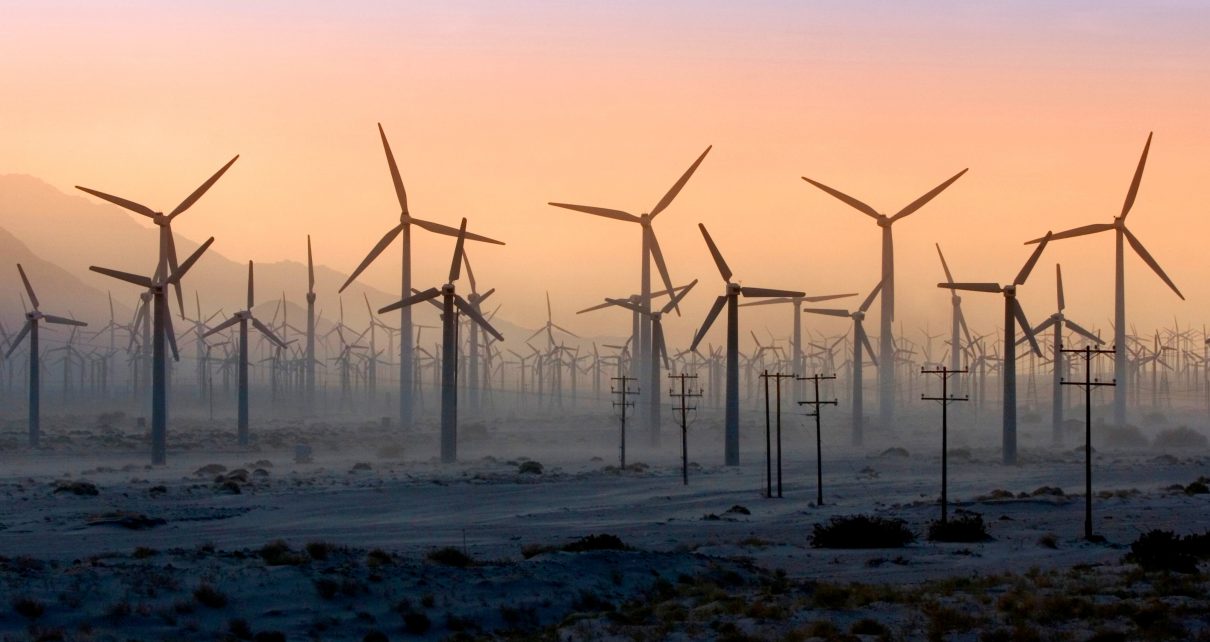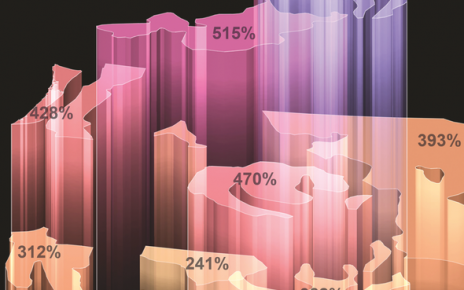The United States is on pace to install record amounts of wind and solar this year, underscoring America’s capacity to build renewables at a level once considered impossible.
The U.S. Energy Information Administration expects the U.S. will install 37 gigawatts of new wind and solar capacity this year, obliterating the previous record of almost 17 GW in 2016.
The renewable boom boosts U.S. climate efforts. Energy modelers think the nation will need to deploy about 40 GW of wind and solar every year over the next decade to achieve deep decarbonization of its electric grids.
But whether 2020 is an aberration or the beginning of a mass greening of the U.S. power sector depends in large part on what policymakers do next.
This year’s renewable energy expansion is driven in part by the expiration of the wind production tax credit and a decrease in the investment tax credit available to solar projects. The last time the PTC expired, in 2012, the U.S. installed a then record 13 GW of wind. The next year, it failed to build a single gigawatt.
“It is still worth celebrating,” said Mike O’Boyle, who leads electricity research at Energy Innovation, a think tank that favors a transition to clean energy. “What I am worried about is can we replicate that success consistently, not to hit the record one time, but do it over and over again?”
The potential for a renewable energy drop-off points to the need for a national clean electricity standard or some other policy to drive green investments, he said.
“We need a clear signal,” O’Boyle added. “We can’t afford another bust cycle that sort of decimates the industry.”
There are significant differences between now and a decade ago. Most importantly, wind and solar are considerably cheaper.
The outlook for solar remains strong, with prices in the sector continuing to decline. And in the case of wind, the industry has room to grow in large parts of the West.
But industry observers said the wind projects coming online this year will weigh on wholesale power prices in the markets where they are built, dragging down the incentive to build new wind projects in future years.
Anthony Logan, an analyst who tracks power markets at Wood Mackenzie, said some of the wind projects anticipated to come online this year could be pushed off to 2021. EIA expects an additional 7.3 GW of new wind next year. But the outlook for wind is significantly more challenged in the middle part of the decade, Logan said.
“The depressed prices in high wind areas combined with the PTC rolling off create a dynamic where wind build is sharply curtailed,” he said.
The challenges do not end there. Much of the wind and solar development occurring this year is taking place in regions with large amounts of renewables already.
Texas, Iowa and Oklahoma ranked first, second and third, respectively, in total installed wind capacity in 2019. Those three states are expected to lead new wind installations again this year, accounting for 9.4 GW of the 23 GW expected to be installed.
California, meanwhile, continues to outpace most of the country in terms of new solar installations. The Golden State is expected to add 2.3 GW of solar this year on top of the nation-leading 11 GW that’s already installed. A total of 13.7 GW of solar is expected to come online nationally in 2020.
Greening America’s collection of regional electric grids will not only require an expansion of renewables into new regions, but more transmission to carry it to the areas where power is consumed, analysts said.
“We’re going to need more extension cords,” said Steve Cicala, a professor who studies power markets at Tufts University.
Power prices in areas with lots of renewable generation are often low and can frequently turn negative because there is not enough transmission to export power to cities and other demand centers. By contrast, power prices around cities are often higher due to transmission congestion, helping support fossil fuel plants that degrade air quality in urban areas.
“If you can get the power from where it is being produced to where it is consumed, you can turn off those polluting power plants,” Cicala said.
There are some notable exceptions to the regional trend. Texas is on pace to install 3.3 GW of solar this year, a 36% expansion, and add 5.9 GW more in the next two years.
The Lone Star State’s solar boom will help address concerns over inadequate electricity supplies to meet Texas’ summer demand peaks. Those are now met in large part by fossil fuel plants, which ramp up as temperatures rise and air conditioners flick on. Meeting large parts of that demand with solar will significantly green the Texas grid.
In the big picture, the amount of wind and solar deployed this year will need to be replicated in coming years.
When Energy Innovation mapped out a pathway earlier this year for reducing power sector emissions 90% by 2035, it estimated the U.S. would need to add about 40 GW of renewables every year over the next decade. A 2016 report by the Obama White House estimated renewable deployments of roughly 30 GW through 2035 were needed to achieve an 80% reduction in emissions by 2050.
“One thing to think about with this surge is, yes, it’s doable. We can ramp up quickly,” said John Larsen, an analyst who tracks the power sector at the Rhodium Group, an economic research firm. “But we need to be able to continue to ramp.”
Reprinted from Climatewire with permission from E&E News. E&E provides daily coverage of essential energy and environmental news at www.eenews.net.




